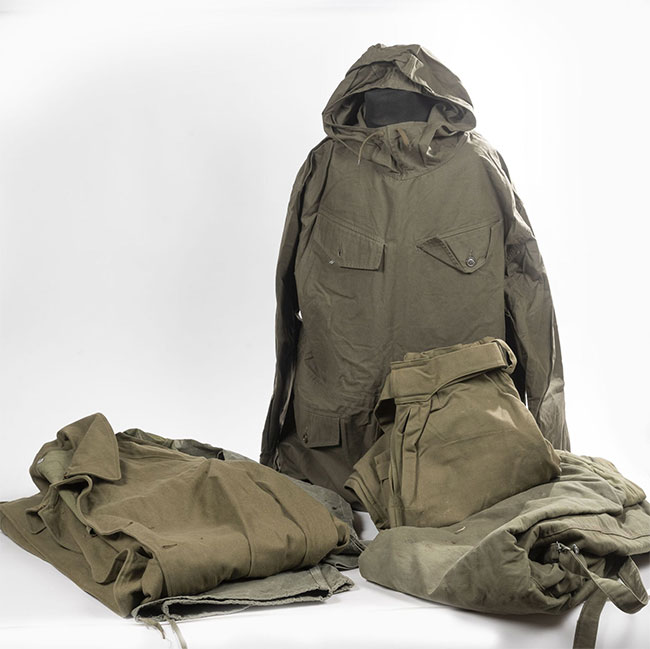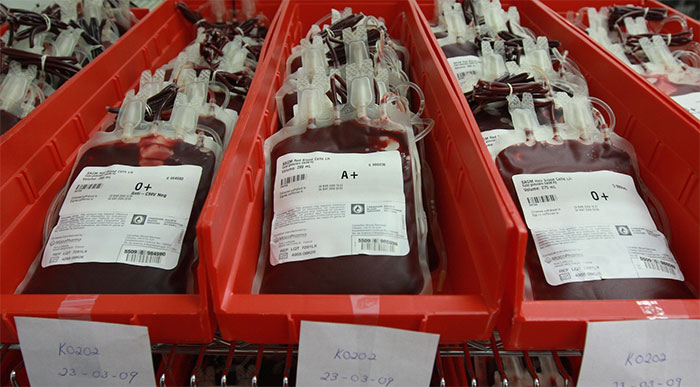Top 7 World War I inventions we use every day
The war redrawn political boundaries, created modern weapons technology, and more . However, in addition to these great advances, World War I also led to the invention of many practical items that are now essential to our daily lives.
Inventions were born during World War I
1. Windbreaker
Windbreakers for both men and women will never go out of style. This fashion trend appeared since World War I. For a long time, coats have been considered important clothing for the British army. The windbreaker that followed was designed to replace the heavy jackets used by French and British officers during World War I.

Windbreakers for both men and women will never go out of style. (Illustration photo: Zhihu).
Two British companies, Aquascutum and Burberry, claim to be the manufacturers of the first windbreakers of the World War. Modifications to windbreakers were made during World War I, including D-rings and shoulder straps. D-rings are designed to hold swords or other weapons, while shoulder straps are used to attach epaulettes.
These windbreakers include large pockets for maps, protective armor, and rear vents. They were waterproof and proved very effective in protecting soldiers from rain, making them popular during the war.
2. Blood bank
The blood transfusion process during treatment before World War I was carried out very poorly, so many soldiers died from blood loss. Or to be more precise, at that time humanity did not have a proper procedure for blood transfusion.

In the past, they used more traditional methods to store blood. (Illustration photo: Zhihu).
Therefore, US military doctor Oswald Robertson consulted with the British Army and successfully developed the first blood bank during World War I.
Today, when we enter a blood bank, we see carefully sealed bags of frozen blood labeled with barcodes and descriptions of blood type information. However, in the past, they used more traditional methods to store blood. That is to preserve blood in glass bottles on ice and add citrate and glucose solutions to preserve it.
3. Solar lamp

Solar lamps (also known as medical ultraviolet lamps) to provide more light for children. (Illustration photo: Zhihu).
World War I led to an increase in poverty and malnutrition, leaving many children facing health problems such as rickets. In this context, Dr. Kurt Huldschinsky in Berlin observed pallor in children with rickets and concluded that it was due to vitamin D deficiency. Doctors also discovered that sunlight can Heal soldiers' wounds. So, they combined these two discoveries and finally invented the Sun lamp (also known as medical ultraviolet lamp) to provide more light to children.
4. Steel helmet

Designed the first helmet made of thin steel for soldiers. (Illustration photo: Zhihu).
Before World War I, soldiers often covered their heads with a piece of cloth - not the safest way to avoid bombs. Therefore, the Frenchman August-Louis Adrian observed this situation and designed the first helmet made of thin steel.
Following France, the UK also produces its own helmets with a similar design but relatively thicker material. France and the United States later adopted similar designs. Then in 1916, unique helmets with special neck protection were produced in Germany.
5. Wristwatch

Even today, wristwatches are still a huge market! (Illustration photo: Zhihu).
Before World War I, people could only tell the time by the sound of factory whistles or church bells, and the habit of wearing watches was not widespread. However, during the war, soldiers had difficulty taking their watches out of their pockets to check the time. It was during this period that innovators recognized a gap in the market and people began to realize the need for watches - watches that could be detachable. Before long, wristwatches were being sold and demand continued to increase. Even today, wristwatches are still a huge market!
6. Sanitary napkins

Cellulose cotton is still used to make sanitary napkins. (Illustration photo: Zhihu).
World War I even contributed to the invention of sanitary equipment. During the war, the demand for cotton products increased because they were needed to make clothing for soldiers. Therefore, Sphagnum moss is a plant with antibacterial properties that is used as a substitute for cotton products to absorb blood.
However, Kimberly-Clark Company introduced a type of cellulose cotton that was extremely absorbent and it attracted the attention of nurses on the front lines of caring for wounded soldiers. They found that this material is also suitable for use by women during their period. Kimberly-Clark Company recognized this market need and started selling Kotex sanitary napkins, which also caused competition in the sanitary napkin market. Similarly, cellulose cotton is still used to make sanitary napkins and to stop bleeding from serious wounds.
7. Train

Railways were a means of quickly mobilizing troops and evacuating the wounded. (Illustration photo: Zhihu).
The importance of the railway system was well documented during World War I. Railways were not only an important means of effectively transporting manpower and equipment to the front lines, but also could quickly mobilize troops and evacuate the wounded. The war exposed the wastefulness of railway operations before 1914 and demonstrated that railways were an essential resource. The nationalization process of European railways was also accelerated. In the late 1920s, Britain established the first Ministry of Transport, and the government and academia worked together to build a strong administrative foundation using the experience and knowledge gained from the war.
- The inventions change the world of Americans
- The important inventions of the Germans changed the world today
- Inventions change the world of young people under 20 years old
- Which invention will change the world this year?
- The inventions change the world medical history
- 15 quirky inventions but the idea is quite interesting
- The inventions inspired by animals
- Great inventions did not win the Nobel Prize
- Interesting inventions inspire life
- The world's most silly inventions
- 5 modern inventions but useless on cars
- Unusual inventions
 Daily use inventions come from universities
Daily use inventions come from universities Special weight loss device helps prevent appetite
Special weight loss device helps prevent appetite 8 inventors were killed by their own inventions
8 inventors were killed by their own inventions Iran invented a motor car powered by water
Iran invented a motor car powered by water